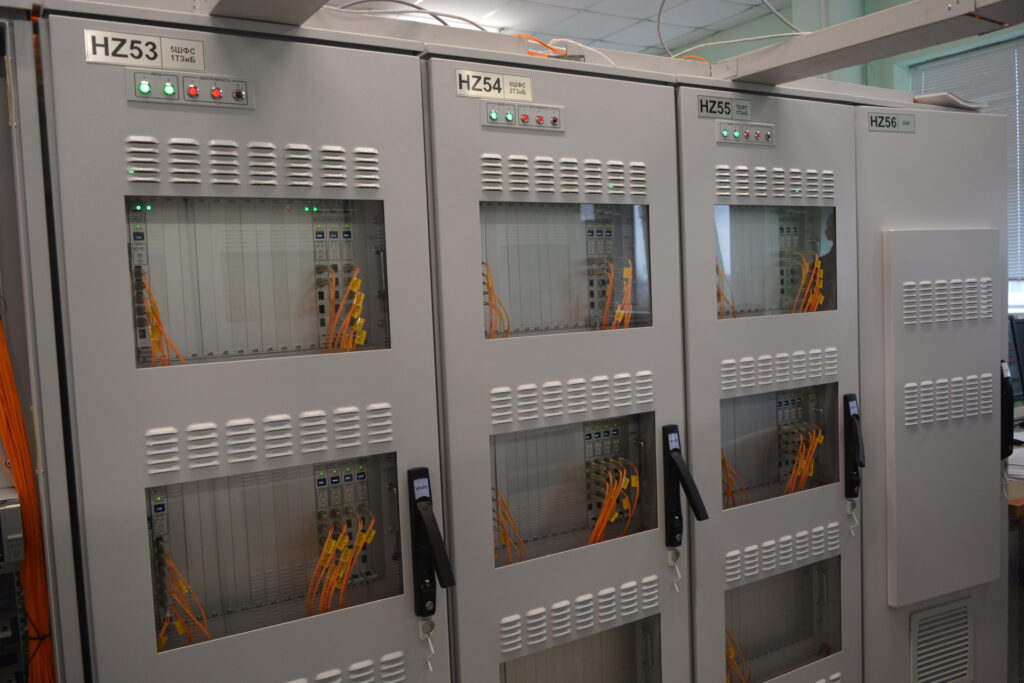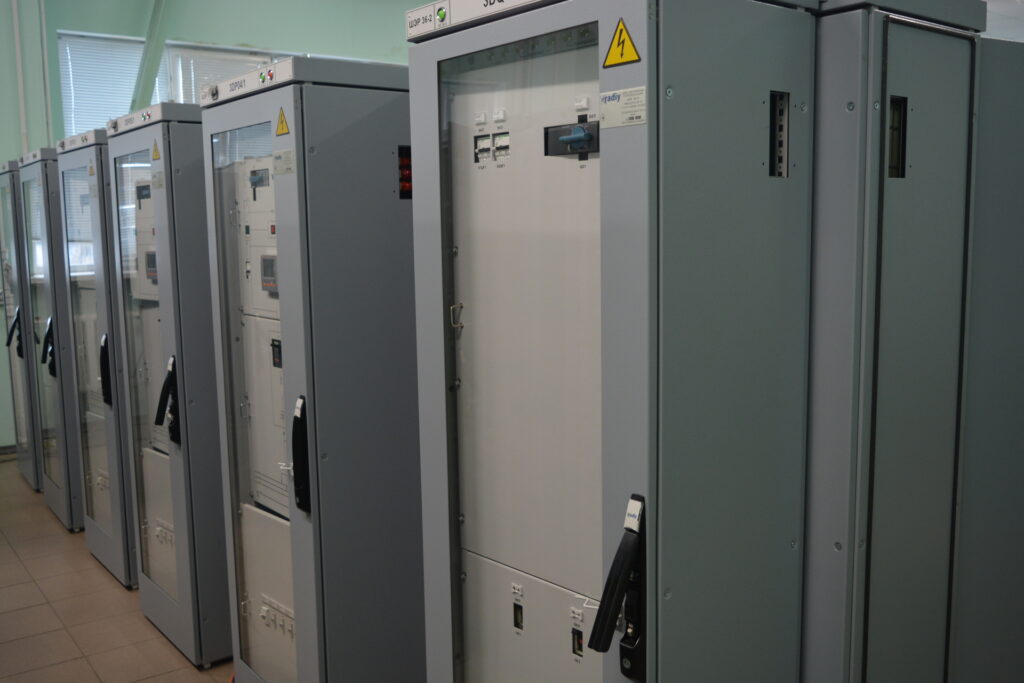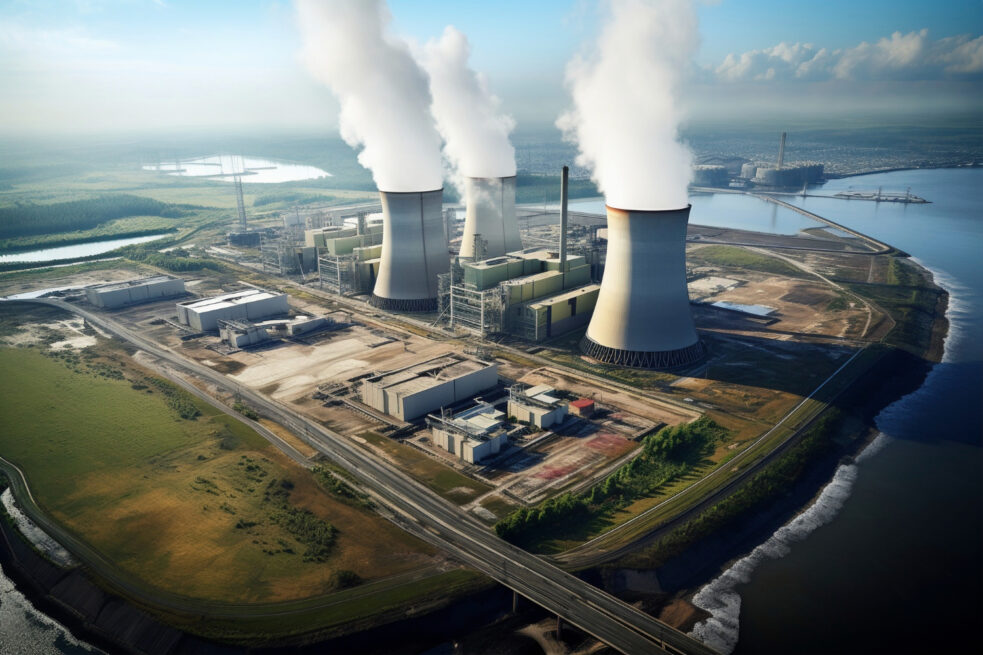
How to Choose Fire Alarm Systems for Production: Tips from Radiy
04.04.2025
Lighting Control System SKO-1 for Farmers Passed Preliminary Tests
18.04.2025Nuclear power in Ukraine plays a key role in the national energy system, providing a stable, environmentally friendly and independent source of electricity.
The role of nuclear engineering for Ukraine’s power system
Ukraine seeks to strengthen its energy independence through the development of nuclear power. Therefore, developing the most advanced products as well as modernizing the existing equipment for the power sector play a strategic role in Ukraine. Ukrainian companies, such as Radiy, develop innovative technological solutions for nuclear power plants (NPPs) to ensure reliability and safety of energy systems not only in our country but also around the world. Thanks to the exceptional talent and professionalism of Ukrainian engineers, the world benefits tremendously from efficient and safe energy systems.
How many NPPs are operating in Ukraine in 2025?
Nuclear power remains an important part of Ukraine’s energy security, providing cheap, reliable and environmentally friendly electricity. The number of power plants in Ukraine that operate safely is crucial for the country’s economic strength and energy independence.
As of March 2025, here is a list of all operating NPPs in Ukraine.
Rivne NPP
Located near Varash city in Rivne region. It consists of four power units: two VVER-440 and two VVER-1000 reactors.
Khmelnytsky NPP
Located near Netishyn city in Khmelnytsky region. There are two operating power units with VVER-1000 reactors. The construction of the 3rd and 4th power units is ongoing to increase power capacity.
South Ukraine NPP
Located near Pivdenoukrainsk city in Mykolaiv region. It consists of three power units with VVER-1000 reactors.
All of Ukraine’s operating nuclear power plants, except for Zaporizhzhia NPP, cover about 60% of Ukraine’s electricity needs.
Zaporizhzhia NPP: status and prospects
It is located near Enerhodar city in Zaporizhzhia region. Zaporizhzhya Nuclear Power Plant (ZNPP) is the largest nuclear facility in Europe. It has six power units and VVER-1000 reactors. In 2022, the plant was occupied by the Russian troops. ZNPP remains in the center of international attention due to its occupation and ongoing threats to nuclear safety. During the summit in France in October 2024, Andriy Yermak, the Head of the Office of the President of Ukraine, stressed the need to strengthen efforts to ensure the safety of ZNPP against the backdrop of the Russian occupation and attacks on Ukraine’s energy infrastructure during the summit in France. He emphasized that the seizure of the plant was a gross violation of international law and the nuclear safety principles.
In September 2024, International Atomic Energy Agency (IAEA) General Director Rafael Grossi paid his fifth visit to ZNPP and reported significant damage to one of the cooling towers as a result of the August fire, noting that the structure would likely need to be dismantled. During the visit, he also inspected the pumping station and the nuclear fuel storage facility, stressing the unstable situation at the plant.
ZNPP is currently in a “cold shutdown” mode and does not generate electricity, depending on external power to maintain the safe condition of nuclear materials. The IAEA calls on all parties to the conflict to exercise restraint and take measures to ensure the safety of the facility.
The further fate of ZNPP depends on the military and political situation in the region and international efforts to return the plant under Ukrainian control. Until the facility is fully de-occupied, nuclear safety risks remain high, and the international community continues to look for ways to address this extraordinary threat.
Nuclear energy in Ukraine: Key aspects
Secure NPPs in Ukraine mean safe energy in Europe, because nuclear power in Ukraine has long been a significant part of its energy system.
Main source of electricity
Nuclear power plants generate about 60% of Ukraine’s electricity, making them the most important component of the energy system.
Energy independence
Since traditional energy resources (coal and gas) are largely imported, NPPs help to reduce Ukraine’s dependence on foreign energy. Ukraine is gradually switching to alternative nuclear fuel supplies, in particular to Westinghouse’ fuel (USA), which strengthens its energy security.
Stability of the electrical grid system
Nuclear power plants provide the base load in the power system, operating steadily 24/7 regardless of weather conditions (unlike with solar or wind power).
Environmental component
Compared to coal-fired power plants, NPPs do not make any emissions, which reduces air pollution and contributes to the fight against climate change. At the same time, solid-fueled thermal power plants emit ash, which is partially retained by filters, unburned fuel residues, sulphurous and sulphurous anhydrides, as well as nitrogen and carbon oxides. The combustion of organic fuels, in particular natural gas, releases toxic nitrogen oxides, carbon monoxide and benzopyrene into the atmosphere.
Possibility to export electricity
Ukraine is integrating into the European energy network ENTSO-E, which will allow it to export surplus electricity, especially during periods of low domestic consumption.
Challenges and prospects
Ukraine’s energy sector faces numerous challenges, which have been exacerbated by a full-scale war, infrastructure destruction and global energy trends. Here are the key challenges to be addressed:
- Consequences of war and infrastructure destruction. Massive shelling of the power system causes massive blackouts. Occupation of Zaporizhzhia NPP: the largest nuclear power plant in Europe is under the control of Russian troops, which threatens the nuclear safety. Destruction of the Kakhovka Hydro Power Plant (HPP): the dam’s explosion in 2023 caused a serious environmental disaster, and due to the lowered water level in the Kakhovka reservoir, the ability to cool the ZNPP reactors is critically low. The lack of sufficient cooling water for a long period of time could cause fuel meltdown and, as a result, reactor overheating, which would inevitably lead to a nuclear disaster.
- Capacity shortages and lack of generation. Loss of thermal generation due to the destruction of many thermal, coal and hydro power plants. Lack of gas for thermal power generation due to reduced production and difficulties with imports. Transition to electricity imports as Ukraine is forced to buy electricity from Europe during peak periods.
- Energy dependence and fuel security. Dependence on nuclear fuel imports: although Ukraine is gradually moving to Westinghouse’ fuel, it was previously dependent on Russian supplies. Coal shortage has been caused by majority of mines having been destroyed or being under the occupation.
- Financial difficulties and debts in the energy sector. As a result of the war and economic difficulties, many consumers are unable to pay for services on time. Ukraine’s energy sector needs large-scale modernization, but investors are reluctant to invest because of the war.
- The need for modernization and environmental challenges. Ukraine’s power grids are outdated and in need of modernization. Green energy issues: solar and wind power plants are located mainly in the south of the country, where some territories are occupied. There is a necessity to develop energy efficiency due to the high level of energy consumption in the residential sector and in enterprises.



Possible solutions
- Strengthening of relations with the European power system: integration into ENTSO-E opens up new opportunities for electricity exports and imports.
- Modernization of Ukrainian NPPs and construction of new reactors:cooperation with Westinghouse will allow us to build new advanced types of reactors and, through the introduction of innovative technologies, increase the level of flexibility and diversion not only in the nuclear industry but also in the entire Ukrainian energy system.
- Renewable energy development: an important area for the future,but requires significant investment.
- Decentralization of the energy system:creation of local generation systems (small modular reactors, small hydroelectric power plants, bioelectric power plants) to increase resilience to attacks.
Despite serious challenges, Ukraine’s energy sector is resilient. Restoring the sector requires comprehensive reforms, investment and international support, as well as significant resources to support projects for nuclear power plants. In the long-term perspective, Ukraine has every chance to create a modern, efficient, decentralized and energy-independent system. Therefore, it is important to take care of:
- NPPs upgrade and lifetime extension – most power units were built in the 1980s.
- Capacity expansion – completion of Khmelnytsky NPP Units 3 and 4 and Rivne NPP Unit 5.
- Strengthening security – taking into account military threats, it is important to implement additional measures to protect nuclear facilities.
Nuclear energy for Ukraine
Ukraine’s nuclear power plants are a fundamental component of the Ukrainian energy system, providing the majority of the country’s electricity. Their importance has grown especially during the war, when nuclear power plants remain the backbone of the energy sector’s stability.

